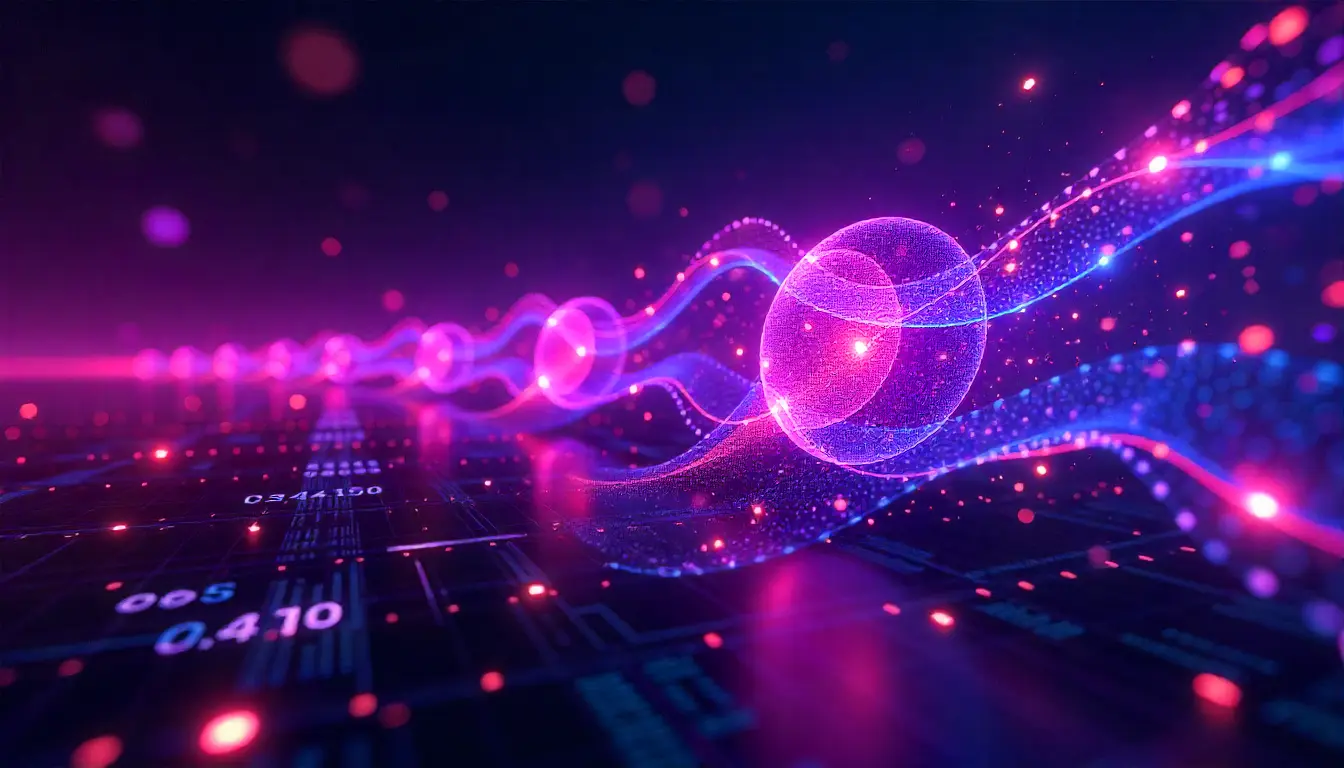Share
Table of contents:

Diffusion models are a class of generative models that are utilized to create complex data distributions by simulating a process that gradually transforms a simple initial distribution into a more complicated target distribution. Originally developed for the field of physics to describe the diffusion of particles, these models have been adapted in machine learning and data science for tasks such as image generation, text synthesis, and other forms of data creation.
Fundamental Principles
Diffusion models operate on the principle of stochastic processes, specifically the diffusion process, which can be understood as a series of steps that add noise to data points over time. The general idea is to begin with a simple noise distribution (often Gaussian) and progressively transform this distribution through a series of learned denoising steps until it resembles the target distribution from which the real data was generated.
Mathematical Formulation
The diffusion process can be mathematically described through two main components: the forward diffusion process and the reverse diffusion process.
- Forward Diffusion Process:
In this phase, noise is gradually added to the original data distribution. This can be represented mathematically as follows:
x_t = √(α_t) * x_0 + √(1 - α_t) * ε
where:- x_0 is the original data sample.
- x_t is the data sample at time step t.
- α_t is a noise schedule parameter that determines the variance of the noise added at each time step.
- ε is a sample drawn from a standard Gaussian distribution.
This process continues over multiple time steps until the data points are transformed into pure noise, effectively mapping the original data distribution p(x_0) to a noise distribution p(x_T) at time T.
- Reverse Diffusion Process:
The goal of the reverse diffusion process is to reconstruct the original data from the noise. This is achieved through a learned model, typically a neural network, which predicts the original data sample given a noisy input. The reverse process can be represented as:
x_{t-1} = (1/√(α_t)) * (x_t - (1 - α_t) * ε)
where the network aims to estimate the noise ε at each time step. By iteratively applying this reverse process, starting from a sample of pure noise, the model can generate new data points that resemble the target data distribution.
Training Process
Training diffusion models typically involves maximizing the likelihood of reconstructing the original data from noisy observations. The loss function commonly used is the mean squared error (MSE) between the predicted noise and the actual noise added during the forward diffusion process. Mathematically, this can be expressed as:
Loss = E[||ε - ε̂||²]
where ε̂ is the predicted noise from the model. By minimizing this loss across many samples and iterations, the model learns to effectively reverse the diffusion process, enabling it to generate realistic samples.
Applications
Diffusion models have gained significant traction in various domains due to their ability to produce high-quality data samples. Some of the prominent applications include:
- Image Generation:
Diffusion models have shown impressive results in generating high-resolution images. They can create detailed and diverse images by gradually transforming noise into structured images that capture the intricacies of real-world data.
- Text Synthesis:
Beyond visual data, diffusion models are also applied in natural language processing to generate coherent and contextually relevant text. This application often involves embedding text data into a latent space where the diffusion process can be executed.
- Audio Generation:
Diffusion models can be extended to generate audio signals by treating audio waveforms as sequential data. By employing similar principles as in image and text generation, they can produce new audio samples that mimic the characteristics of existing audio datasets.
- Data Augmentation:
In scenarios where data scarcity is an issue, diffusion models can generate synthetic data to augment existing datasets. This is particularly useful in domains like medical imaging, where obtaining labeled data can be expensive and time-consuming.
Advantages Over Other Generative Models
Diffusion models have distinct advantages compared to other generative modeling approaches, such as Generative Adversarial Networks (GANs) or Variational Autoencoders (VAEs). Some of these advantages include:
- Stability in Training:
Diffusion models often demonstrate greater stability during training compared to GANs, which can suffer from issues like mode collapse and instability due to adversarial training dynamics.
- High-Quality Output:
They are capable of generating high-fidelity samples with fine details, often surpassing the quality of images produced by GANs, particularly in high-resolution tasks.
- Flexibility:
Diffusion models can easily be adapted to various data types and structures, providing versatility across different applications in data science and AI.
- Theoretical Foundation:
The mathematical framework underlying diffusion models is well-established in stochastic processes, allowing for a clear theoretical understanding of the model's behavior and performance.
Diffusion models represent a powerful and sophisticated approach to generative modeling, leveraging stochastic processes to transform simple noise into complex data distributions. Their mathematical foundation and versatility in application have made them a prominent choice in contemporary data science and artificial intelligence, facilitating advancements in various fields from computer vision to natural language processing. As research progresses, diffusion models are expected to continue evolving, further enhancing their capabilities and applications across a wide range of domains.











